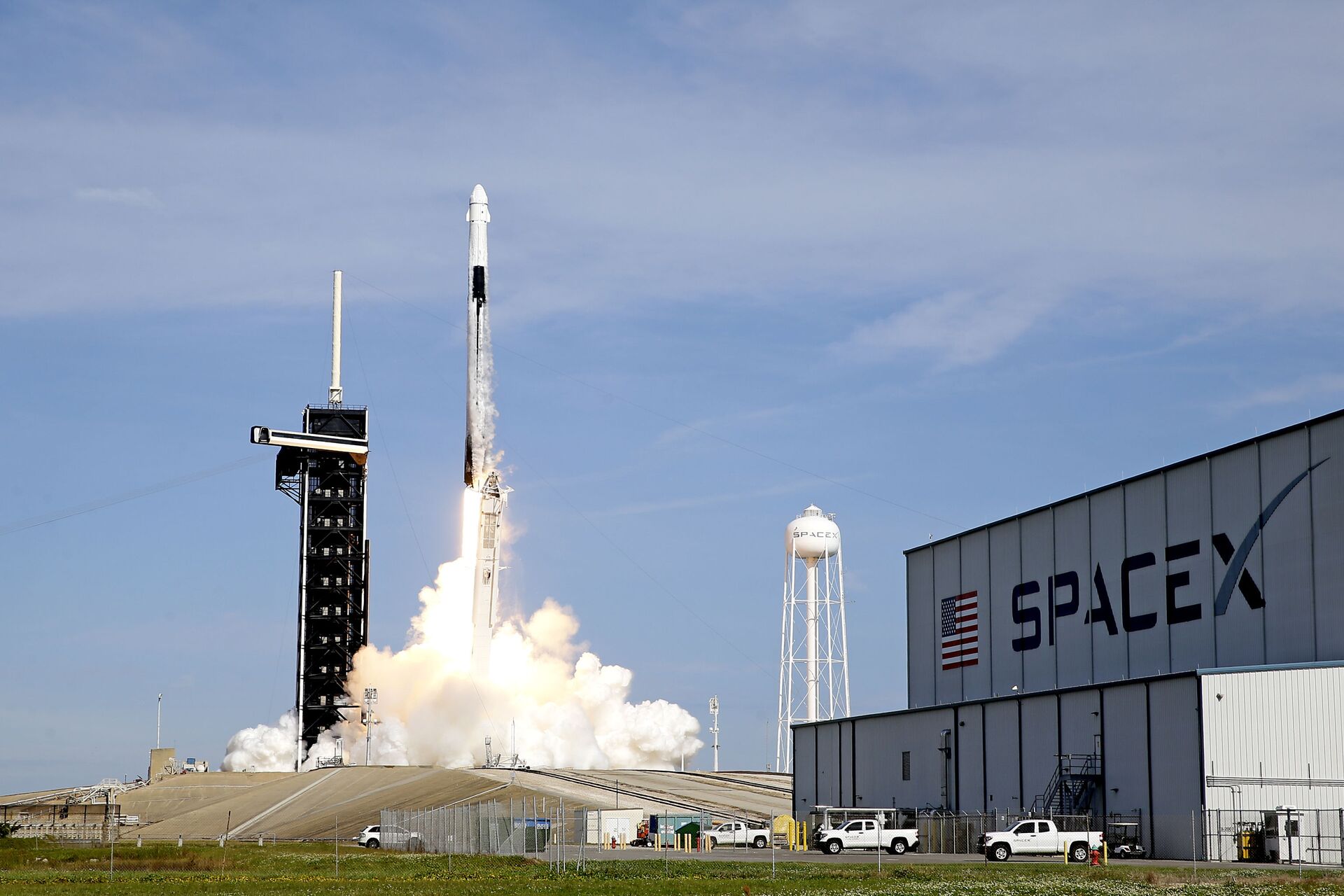Watch: SpinLaunch Conducts First Successful Test of Giant ‘Suborbital Accelerator’ Satellite Sling
01:02 GMT 12.11.2021 (Updated: 13:26 GMT 06.08.2022)
Subscribe
In a development reminiscent of classic science fiction, a California-based startup has performed its first test of a device for launching satellites into space by accelerating them to fantastic speeds instead of loading them atop a rocket engine.
The company announced its successful October 22 test on CNBC on Tuesday, with CEO Jonathan Yaney saying the projectile reached an altitude of “tens of thousands of feet.”
“It’s a radically different way to accelerate projectiles and launch vehicles to hypersonic speeds using a ground-based system,” Yaney explained. “This is about building a company and a space launch system that is going to enter into the commercial markets with a very high cadence and launch at the lowest cost in the industry.”
A video of the test was posted on the company’s website, and CNBC released a copy on social media, as well.
SpinLaunch CEO Jonathan Yaney:
— Michael Sheetz (@thesheetztweetz) November 9, 2021
“This is about building a company and a space launch system that is going to enter into the commercial markets with a very high cadence and launch at the lowest cost in the industry."https://t.co/EMscWseHFF pic.twitter.com/mka3jf0pnF
The device works on the same principle as a sling: placed in a vacuum chamber on a rotating arm that’s accelerated by a small rocket to hypersonic speed, it lets go of the payload at just the right moment, sending it soaring upward on its accumulated momentum.
Yaney said the first test involved a one-third scale suborbital accelerator running at just 20% capacity. Still, the device towers some 300 feet above the New Mexico desert, meaning the final SpinLaunch system is anticipated to be some 900 feet tall.
According to the video, the test took place at Spaceport America, a Federal Aviation Administration-licensed spaceport set up by Richard Branson, founder of Virgin Galactic, for launching its own suborbital flights.
The company was first set up in 2014 and has taken $110 million in venture capital to develop the SpinLaunch system.
“Because kinetically launched satellites exit the atmosphere without a rocket, SpinLaunch enables a future in which constellations of satellites and space payloads can be launched with zero emissions in the most critical layers of the atmosphere,” the company explains on its website.
According to Everyday Astronaut, a single rocket launch can pump out tons of noxious pollutants, including carbon dioxide, carbon soot, carbon monoxide, nitrogen oxides, chlorine, alumina and sulfuric compounds. Moreover, it costs up to $5,000 per pound to lift an object into space on a rocket.
However, even if the system is capable of putting a small satellite into orbit, it’s unlikely to ever supplant a rocket launch, the SpinLaunch’s payload is measured in pounds; by comparison, SpaceX’s Falcon 9 rocket can lift more than 15 tons on a reusable flight and 22.8 tons on an expendable flight, lifting as many as 143 small satellites at once.

A SpaceX Falcon 9 rocket on a resupply mission to the International Space Station lifts off from pad 39A at the Kennedy Space Center in Cape Canaveral, Fla., Sunday, Dec. 6, 2020.
© AP Photo / John Raoux
At its largest, SpinLaunch expects its payloads to be no more than 440 pounds (200 kilograms). The company gave no estimate as to the cost per launch.
The concept of a kinetic energy launcher or mass driver is one well-established in science fiction, and even attempted several times in the real world. Science fiction writers Jules Verne and H.G. Wells employed space cannons repeatedly in their futuristic literature, with the launch device appearing in Verne’s “From the Earth to the Moon” and Wells’ “The War of the Worlds” and “Things to Come.”
In the 1950s and 60s, the US and Canadian defense departments teamed up to build their own space cannon in an operation dubbed Project HARP (High Altitude Research Project), which involved building massive 16-inch-wide guns on Barbados and in Montreal and Arizona. HARP, however, was a series of reentry ballistics tests, not an attempt to develop a reliable alternative to rockets.
A US nuclear scientist proposed in 2010 the creation of a massive cannon that would extend more than 1,600 feet underwater to launch small payloads into orbit, although the device was never built.



